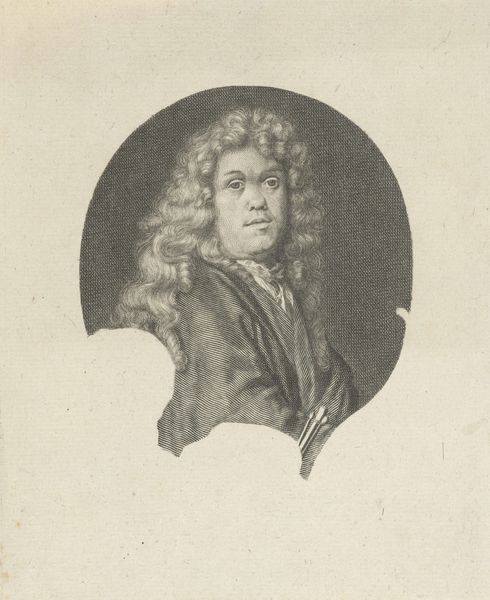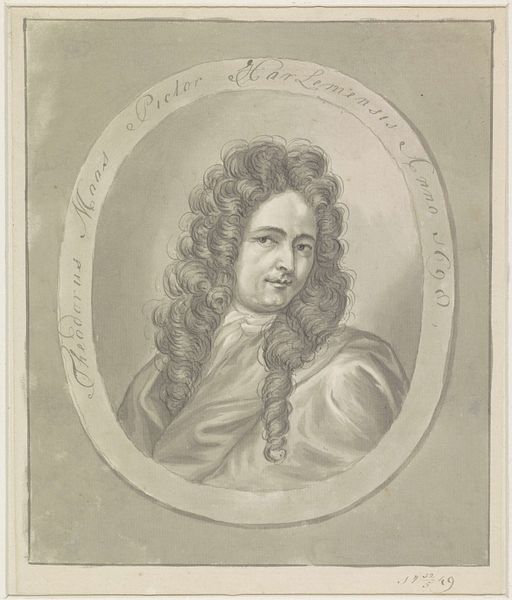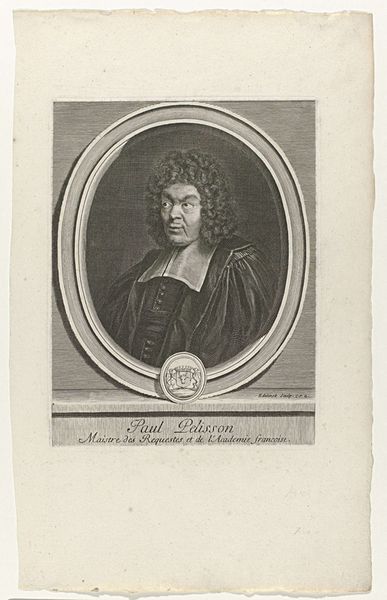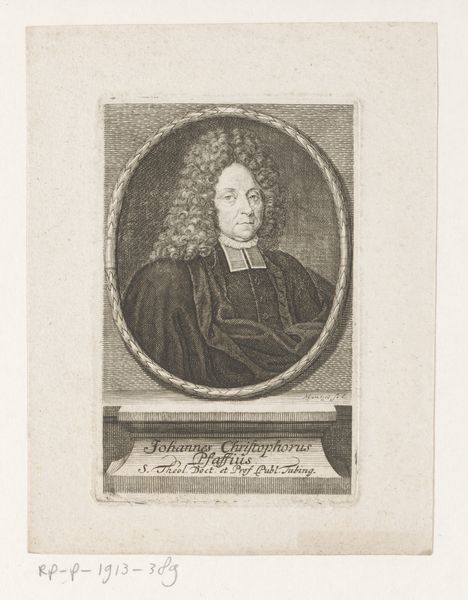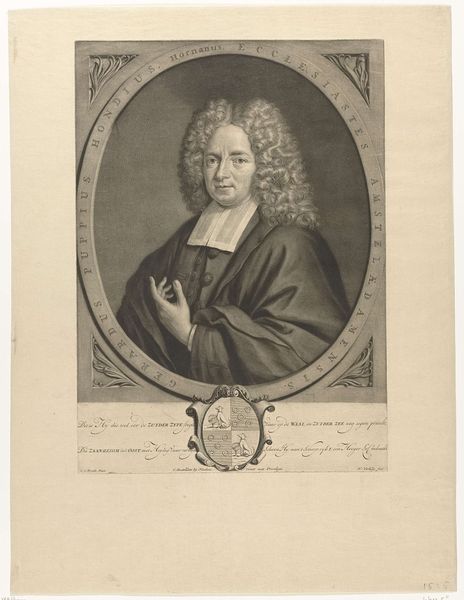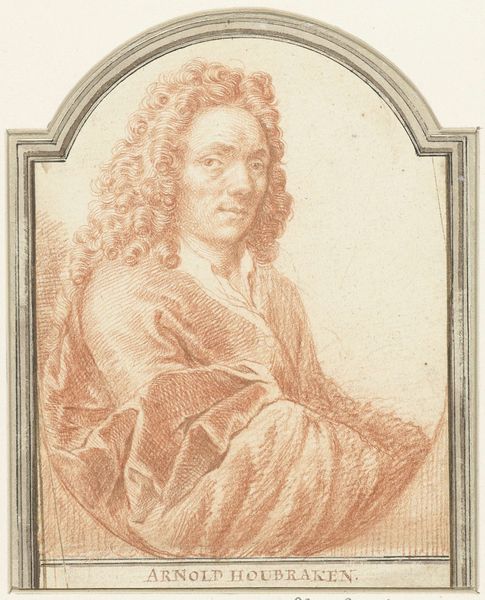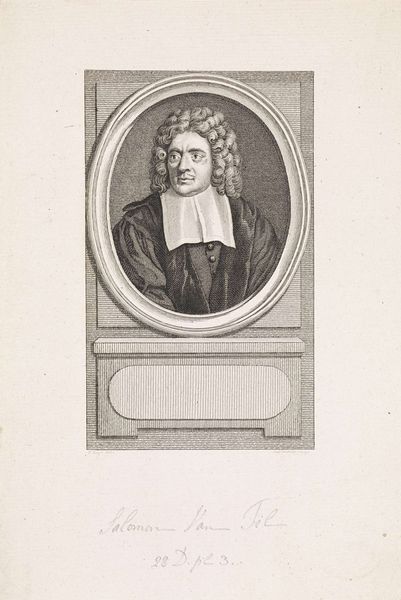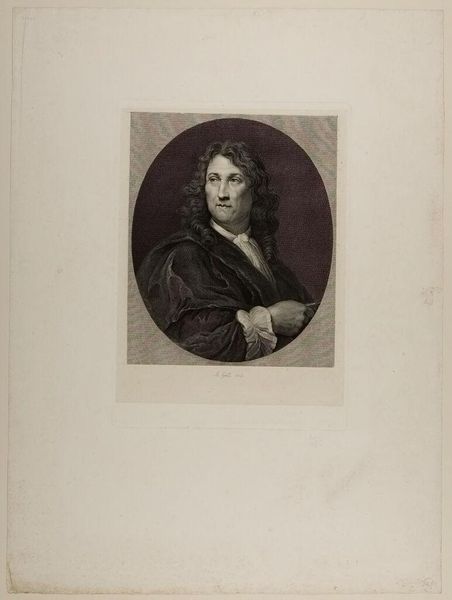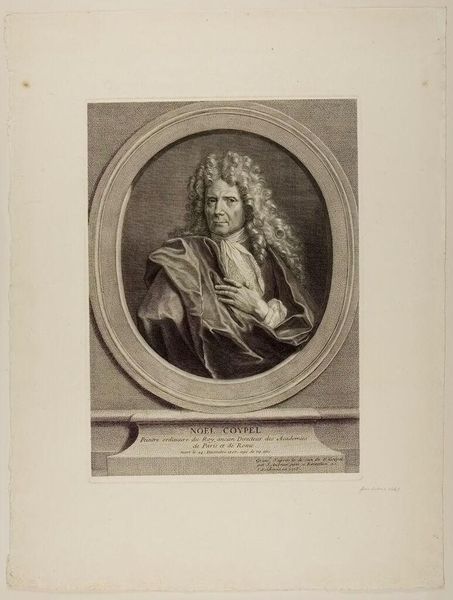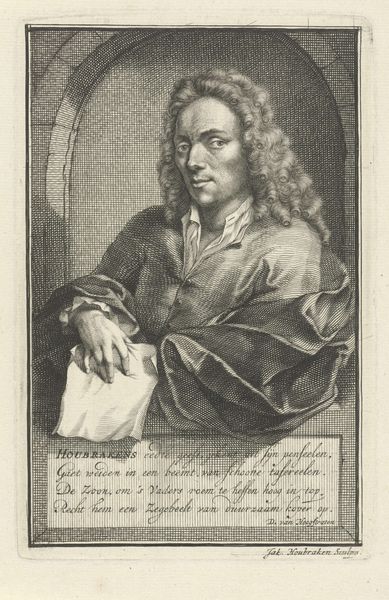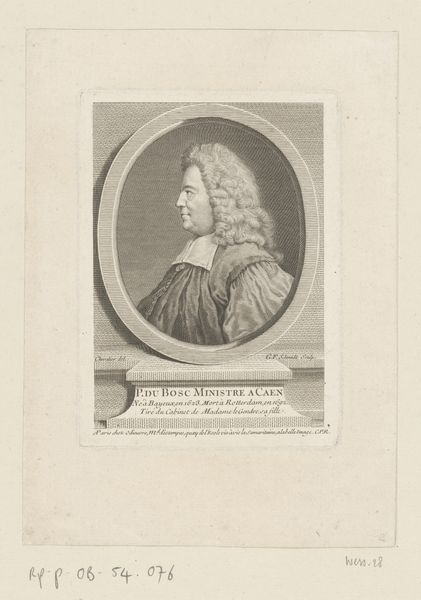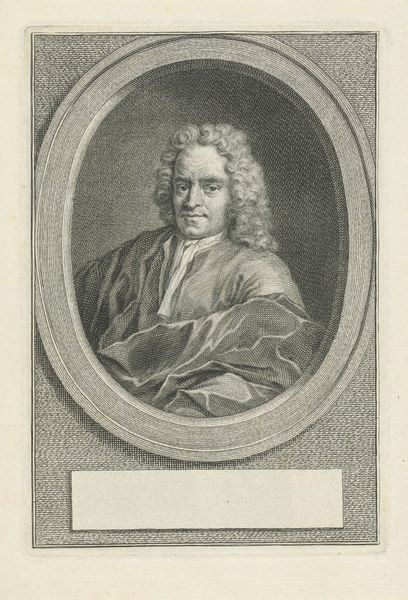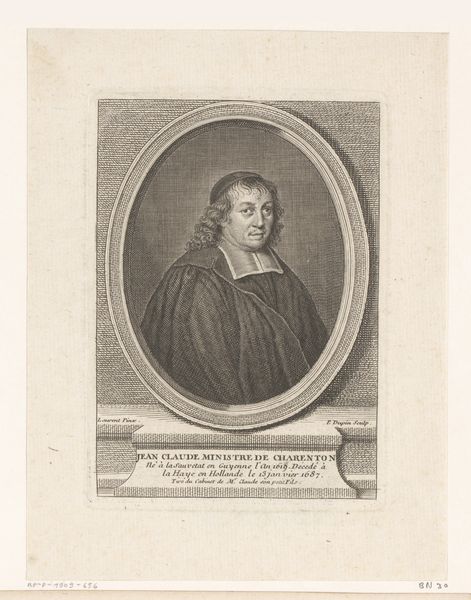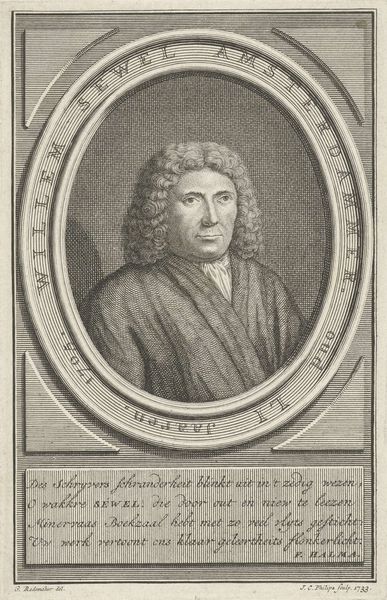
engraving
#
portrait
#
baroque
#
engraving
Dimensions: height 275 mm, width 181 mm
Copyright: Rijks Museum: Open Domain
Curator: Here we have "Portrait of the Artist Gerard de Lairesse," an engraving crafted between 1752 and 1762 by Carlo Gregori, housed here at the Rijksmuseum. What are your initial thoughts? Editor: There's a stark quality here. The oval format containing this powdered wig, rendered in fine lines, feels like a specimen under glass. Coldly intellectual, perhaps? Curator: Coldly intellectual might not be far off, actually. This print exists as a social object. Engravings like this were vital in circulating images, in building an artist's brand, especially after his death, giving the man renown. Editor: Exactly! Think about the composition itself: the tight framing intensifies the gaze. This creates a sense of direct engagement. His pose with delicately clasped hands makes me notice how that oval emphasizes this sense of him contained but presented with the precision of the engraving technique. How intentional this emphasis. Curator: Consider then the function of Baroque portraiture. It served not only as a likeness but also as a declaration of status. The engraver and artist would negotiate and project identity, even decades later. Editor: So, it's not merely about conveying physical resemblance? The wig itself and that drapery suggest he is very carefully costumed as artistic. Curator: Indeed, such markers denoted profession, learning, taste, and the subject’s participation in courtly circles. Though, even the engraver plays a part here – Carlo Gregori adds his style, too, and creates distance by how that wig falls and folds into form in the absence of color. Editor: Interesting. He isn’t necessarily revealing character then, but fashioning this artist's position for public consumption within particular hierarchies, like constructing some kind of painting or theatrical moment. Curator: Precisely. To fully read it, one needs to unpack the socio-political context from which the image emerged as a representation of skill within baroque style. Editor: I’m captivated now. It seems the aesthetic presentation underscores this negotiation of artistic standing as a display. Curator: Right, now look with fresh eyes! Seeing it through that social lens, hopefully, adds dimensions. Editor: Absolutely. It highlights how artists are active participants in their own construction—an ever-unfolding act of performance and history combined into one printed image.
Comments
No comments
Be the first to comment and join the conversation on the ultimate creative platform.
